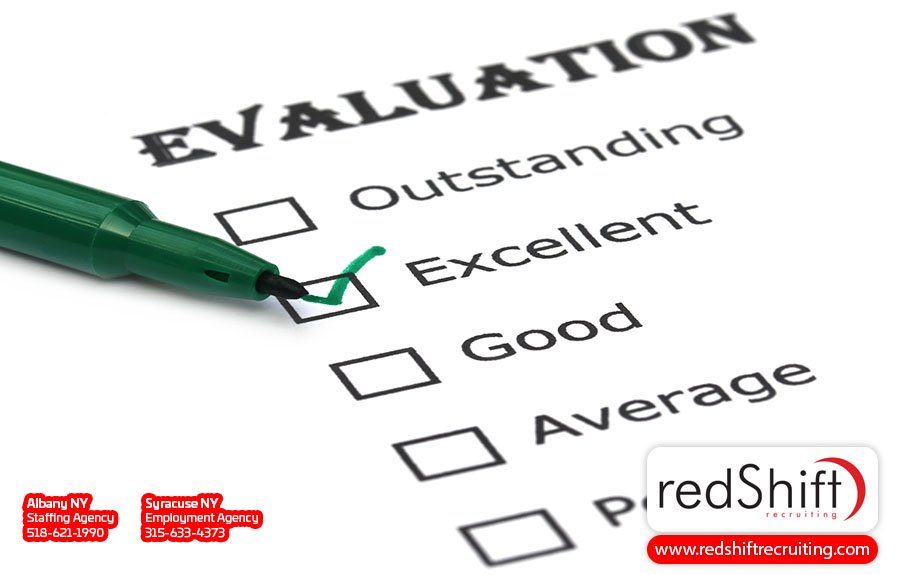
Evaluating the Success of Your Outsourced Development Projects
In today's fast-paced world, outsourcing development projects has become a popular choice for businesses to meet their growing software needs. Outsourcing can offer significant benefits to companies, including cost savings and access to specialized skills and technology. However, to ensure that these benefits are realized, it's essential to have a well-defined strategy in place that identifies the critical factors for success and ensures that outsourced development projects deliver the expected results.
Evaluating the success of these projects can be a challenging task, but it's essential to have robust assessment techniques in place to determine whether the project is on track and achieving its objectives. This article will explore key metrics and strategies to help you assess the success of your outsourced development projects and improve communication and collaboration between in-house staff and external partners.
Understanding the Scope of the Project
Understanding the scope of the project is a crucial first step in ensuring its success. A well-defined project scope sets clear expectations for both your internal project team and external stakeholders, such as clients or partners. Effective project management starts with a comprehensive understanding of the goals, requirements, constraints, and risks associated with the project. This helps to establish a solid foundation upon which all subsequent planning can be built. Stakeholder satisfaction also depends heavily on how accurately you define and manage the project scope throughout its lifecycle. By working closely with your project team to identify potential challenges, devise appropriate solutions, and communicate progress regularly, you help position the entire team for success. Remember that maintaining open communication channels between all parties involved will enable quick adjustments when necessary and keep everyone informed about any changes made along the way.
Setting Objectives and Measurable Goals
Once you understand the project's scope, it is vital to set objectives and measurable goals that align with your expectations. This step is crucial in ensuring the success of your outsourced development projects, as it serves as a framework for all those involved to work towards a common goal. Establishing clear targets allows you to evaluate progress more effectively and make necessary adjustments throughout the course of the project.
To achieve this, project management professionals should develop well-defined project success criteria by identifying key success factors that need to be achieved at various stages of the project lifecycle. These can include meeting specific milestones, delivering high-quality project deliverables on time, maintaining open communication channels between teams, and staying within budget constraints. By setting these benchmarks, individuals responsible for overseeing outsourced projects will have a concrete means of assessing overall project performance against set standards. Consequently, they can ensure that their outsourcing partners are consistently delivering value while working towards meeting established goals and objectives.
Identifying Key Performance Indicators (KPIs)
Pinpointing Key Performance Indicators (KPIs) that accurately reflect the degree of accomplishment is another important aspect of measuring success in outsourced development projects. By utilizing these quantifiable measures, stakeholders can effectively assess whether a project aligns with their predefined objectives and make informed decisions regarding adjustments or improvements. KPIs are valuable tools for internal team management and can be used to facilitate communication with external partners, ensuring transparency and mutual understanding throughout the development process.
When selecting appropriate KPIs, bear in mind the unique nature of each outsourced development project as well as its specific goals and requirements. A comprehensive approach should incorporate various aspects such as time management, cost efficiency, quality assurance, client satisfaction, and adherence to scope—all contributing factors for measuring overall project success. Utilizing project management software can greatly facilitate tracking progress against established KPIs while fostering collaboration among stakeholders. Identifying relevant success criteria early on allows teams to focus on achieving tangible results while minimizing potential obstacles related to misaligned expectations or unclear project success factors.
Tracking Progress and Timeline
Keeping a keen eye on your project's progress and timeline is crucial to ensuring its success, and it’s important to monitor each stage in the project life cycle, from inception to completion. Proper project planning, including setting realistic deadlines and allocating resources efficiently, plays a significant role in achieving desired outcomes while staying within the defined project budget. As you collaborate with your outsourced development team, establish clear communication channels and provide regular updates to all project team members. This will allow for quick identification of any potential roadblocks or deviations from the planned timeline. By maintaining transparency and encouraging open dialogue among stakeholders, you can effectively manage expectations and foster a strong working relationship that ultimately leads to successful project delivery.
Evaluating Quality of Deliverables
Ensuring high-quality output is vital in outsourced development projects, as it directly impacts project success and client satisfaction. One way to assess the quality of deliverables is through rigorous quality assurance testing that includes functional, performance, security, and user acceptance tests. Regular code reviews and adherence to coding standards can also provide valuable insights into the overall quality of work produced by your outsourcing partner.
Encouraging open communication channels between your team and theirs will further help you identify any issues early on and address them before they escalate into larger problems. Remember that consistently monitoring and evaluating the quality of deliverables plays a crucial role in achieving the desired outcomes from your outsourced development projects.
Establishing Clear Communication Protocols
Imagine a well-oiled machine where all its parts work in perfect harmony, ensuring the smooth functioning of the entire system. This is what clear communication protocols can do for your outsourced development projects, significantly increasing their chances of success. Establishing and adhering to communication procedures is crucial when working with external teams. Project managers must set expectations from the beginning regarding how often and through which channels updates will be shared, as well as who should be involved in specific discussions. By proactively addressing potential communication roadblocks, project managers pave the way for a successful project, fostering an environment that encourages collaboration and effective problem-solving among team members across different locations and time zones.
Ensuring Timely Delivery of Deliverables
Besides clear communication protocols, another vital aspect to focus on is the timely delivery of deliverables. Ensuring that deadlines are met and projects stay on track is an essential element in guaranteeing project success for outsourced development projects. To ensure timely delivery, it's crucial to establish a well-defined project plan with schedule expectations agreed upon between both parties. Regular progress updates and milestone tracking can help identify potential delays early enough to take corrective action. By diligently monitoring your outsourced development projects, you'll be able to maintain control over their progression and ultimately contribute to their overall success.
Analyzing Documentation Standards
Ah, the joys of documentation! Whether you love it or hate it, analyzing documentation standards is a crucial aspect of evaluating your outsourced development projects' success. By ensuring that your external team follows clear and concise guidelines for documenting their work, you can effectively track project progress, identify potential issues early on, and ensure overall team satisfaction.
Measuring success involves more than just meeting deadlines and staying within budget, and proper documentation provides the data needed to help both internal and external teams make sure they are staying aligned with shared goals and expectations. Good documentation should be clear, organized, and consistent in formatting and language use, as these factors contribute to easy-to-understand records that foster collaboration across all parties involved. A well-documented project not only promotes transparency but also serves as an invaluable resource when troubleshooting issues later down the line, ultimately leading to increased efficiency and higher chances of achieving desired outcomes. Although it is often overlooked, the long-term value of good documentation practices is immense!
Assessing Value for Money
Another significant aspect of evaluating outsourced development projects is assessing value for money. This will help ensure that you're not only receiving a quality product but also reaping maximum benefits from your investment. In evaluating the success of outsourced development projects, one must consider project team satisfaction and customer satisfaction as key indicators. When both parties are satisfied with the collaboration and final outcome, it's usually an indication that the resources allocated have been used effectively and efficiently. To assess value for money, continuously monitor performance metrics such as on-time delivery, adherence to budget, and achieving project goals or milestones. By keeping track of these factors throughout the project lifecycle, you can make informed decisions regarding any necessary adjustments and ultimately derive greater value from your outsourcing endeavors.
Monitoring Customer Satisfaction
It's crucial not to overlook the importance of monitoring customer satisfaction throughout the lifecycle of outsourced development projects. After all, satisfied customers are more likely to continue working with your company and provide valuable referrals. Regularly assessing customer satisfaction can help you identify areas where improvements may be made in order to ensure project success.
Utilizing various methods such as surveys, feedback sessions, and end-user testing can greatly contribute to better understanding end-user satisfaction levels. By proactively identifying potential issues or concerns from customers, you can address them promptly and make any necessary adjustments. This approach helps guarantee a higher degree of project success while fostering stronger relationships with clients, who appreciate being involved in the development process.
Appraising Team Performance
Visualizing a well-oiled machine, with each component working seamlessly together to achieve the desired outcome, is an apt representation of appraising team performance in outsourced development projects. Just as individual parts contribute to the overall functionality of the machine, team members play a crucial role in determining a project’s success or failure.
Appraising team performance goes beyond merely assessing their skills and competencies; it involves evaluating how effectively they collaborate, communicate, and adapt to changes throughout the project lifecycle. To foster continuous improvement within your outsourced teams, regular feedback and open channels of communication are essential. By identifying areas where improvements can be made and recognizing exceptional performances by individuals or groups, you encourage not only personal growth but also strengthen relationships between all parties involved. This approach creates a culture that values transparency and teamwork, ultimately leading to better outcomes for your development projects over time.
Measuring Technical Competency
The success of any project lies in the hands of its project team, which works tirelessly to drive innovation and deliver exceptional results. However, measuring your team’s technical competency is critical to ensuring continuous growth and improvement. After all, it's only when you have capable professionals driving your outsourced development projects that you can truly reap the rewards of fruitful collaboration.
Measuring project success goes beyond just looking at project outcomes or supplier satisfaction; it involves assessing the key metrics tied directly to the technical abilities of team members. By evaluating these factors, you can gain valuable insights into areas where they excel and those where improvements are needed for future endeavors. This approach enables you to make data-driven decisions on resource allocation, training programs, and performance expectations, all of which contribute towards maintaining a high-performing team that consistently exceeds expectations while fostering healthy relationships with suppliers.
Ensuring Adherence to Regulations
Ensuring adherence to regulations is another important step when evaluating the success of outsourced development projects, as non-compliance can lead to severe consequences such as legal penalties and reputational damage. When evaluating your outsourced development projects, closely monitor their adherence to industry-specific regulations, data protection policies, and intellectual property rights. Additionally, consider how well they follow best practices for quality assurance and security standards. By maintaining strict observance of these requirements, you not only safeguard your business from potential risks but also contribute positively towards building trust with stakeholders.
Assessing Security Protocols
Security protocols are essential for safeguarding sensitive information and ensuring that unauthorized access or data breaches do not occur during the project's lifecycle. To effectively assess these protocols, you should have an understanding of the contextually relevant risks and threats associated with your specific industry and project type.
One way to evaluate security protocols is by conducting regular audits and penetration tests on the systems used throughout the project. This process will identify potential vulnerabilities and provide recommendations for improvements, ultimately enhancing overall system security. Engaging external experts can also be helpful in providing unbiased insights into the effectiveness of implemented measures. By continuously monitoring and updating security practices, you can ensure that your outsourced development projects remain secure while maintaining high-quality deliverables for your organization.
Evaluating Risk Management Practices
Effective risk management helps organizations identify potential issues before they escalate and become major complications. To evaluate risk management practices in outsourced development projects, start by examining the strategies and methodologies employed by your project manager. This should include how risks were identified, analyzed, prioritized, monitored, and mitigated.
Additionally, look out for any lessons learned from previous projects or industry best practices that have been incorporated into your organization's approach to risk management. By ensuring that these components are addressed and implemented in your outsourced development projects, you'll be better positioned to achieve overall project success while minimizing unforeseen obstacles along the way.
Identifying Cost Savings
Identifying cost savings is important for any project manager when demonstrating the value of an initiative to stakeholders. By analyzing your current and past projects, you can gain valuable insights into areas where costs could be reduced without compromising on quality or efficiency. This not only helps to improve the profitability of individual projects but also enables you to allocate resources more effectively for future projects.
As you embark on new outsourced development ventures, keep an eye out for potential cost-saving opportunities. Constantly evaluate different aspects like team communication, resource utilization, and project management methodologies that may have resulted in unexpected expenses in previous undertakings. By incorporating these lessons learned, you are better positioned to streamline operations and maximize returns on investment for your future projects while maintaining high quality standards.
Assessing Scalability of Solutions
Scalability is not only about handling increased workload; it also involves ensuring that your solutions remain contextually relevant as demands change over time. In order to confidently boast that your outsourced development project was indeed successful, take some time to analyze how easily your solution can adapt and grow in response to evolving requirements. By doing so, you'll be better equipped to make informed decisions and maintain a competitive edge in today's fast-paced business landscape.
Analyzing Flexibility of Solutions
Flexibility plays a vital role in evaluating the success of any project and can greatly impact its adoption and long-term effectiveness. When examining outsourced development projects, it's important to consider how adaptable and versatile the proposed solutions are. This means looking at their ability to accommodate changes, integrate with other systems, or adjust according to evolving business requirements. A flexible solution will ultimately contribute positively to your project's completion and improve overall satisfaction with the results while allowing any necessary adjustments to be made quickly and easily.
Monitoring Maintenance Costs
Monitoring the maintenance costs of your outsourced development projects is essential for an accurate evaluation of their overall cost-effectiveness. By keeping an eye on these expenses, you'll be able to ensure that you're staying within your allocated maintenance budget and promptly address any issues before they escalate further. Moreover, tracking these numbers enables companies to identify trends or patterns in spending, making it easier to make strategic decisions on future projects based on past experiences.
Assessing Post-Deployment Support
There's nothing quite like the feeling of satisfaction that comes from successfully launching an outsourced development project. You've overcome countless obstacles and collaborated with a team potentially many miles away, and now you can finally breathe easy as your product is out in the world. Unfortunately, the work isn’t done when the project is launched, and to ensure long-term success, you must also be vigilant in assessing post-deployment support.
Evaluating the success of outsourced development projects goes beyond just examining their initial launch outcomes; it requires regular assessment to ensure that they continue performing optimally in their operational environments. Assessing these critical aspects includes monitoring how quickly issues are addressed or resolved by the outsourcing partner, gauging customer satisfaction levels, implementing updates or improvements, and evaluating overall communication. Paying attention to these factors will help you make sure your outsourced project remains successful long after the initial deployment.
Verifying Technical Support Quality
Ensuring that your external partners are providing top-notch assistance is crucial in evaluating the success of any outsourced development projects. Diving deep into contextually relevant aspects of technical support will help paint a clearer picture of their capabilities and effectively assess their response time, issue resolution efficacy, and overall communication skills. Additionally, it’s important to examine whether they understand your unique needs and requirements, which should be reflected in their approach to solving problems or answering queries.
Assessing Resource Utilization
In addition to monitoring maintenance costs, it's crucial to keep an eye on how effectively your resources are being utilized. You've probably invested a significant amount of time and money into these initiatives, so it's important to make sure you're getting the most bang for your buck. Assessing resource utilization can provide valuable insights into whether your outsourcing strategy is working as intended or if there may be areas that need improvement. By examining various factors such as team productivity, communication efficiency, and alignment with project goals, you can get a clearer picture of how your resources are being utilized and identify any potential areas for optimization.
Gauging User Experience
Gauging the user experience is a critical aspect of evaluating the success of any new software launch, as it provides contextually relevant insights that quantitative measures may miss. By understanding and empathizing with your target audience, you can make informed decisions and refine your project to better serve their needs and enhance overall satisfaction, striking a key balance between technical excellence and human-centric design. From usability testing to gathering customer feedback and analyzing usage patterns, assessing the user experience will paint a clearer picture of how well your development projects are actually performing. Armed with this knowledge, you can work closely with your outsourcing partner to optimize functionalities, iron out potential pain points, and ultimately deliver a final product or service that delights its intended audience.
Assessing Error Handling Strategies
Assessing error handling strategies will help you verify that robust and effective methods are in place for addressing any errors or issues that may arise during the development process. By doing so, you can be confident in the quality of their work and minimize the potential risks associated with repeated or poorly handled errors. To assess a team's error handling strategies, it's important to consider how they document and track errors, as well as their approach to troubleshooting, debugging, and resolving issues. Additionally, examine whether they have a strong understanding of best practices in software development in regards to managing exceptions and avoiding common pitfalls.
Effective communication between your organization and the outsourcing team plays a vital role in this assessment too, helping both parties stay informed about any ongoing challenges and the progress made in resolving them. Overall, taking these steps will help ensure the long-term success of your outsourced development projects by maintaining high quality standards throughout each phase.
Measuring Long-Term Success
Understanding how your outsourced development projects fare in the long run will provide you with valuable insights and help ensure that these projects achieve their intended goals. Long-term success should be a major consideration when evaluating the accomplishments of your outsourced development projects. Measuring success goes beyond project completion or hitting milestones; it involves determining if the developed solution continues to meet its objectives over time and whether it can adapt to evolving business requirements. By analyzing factors such as user adoption rates, system performance, and return on investment (ROI), you can gauge the true impact of your outsourced projects and make informed decisions for future endeavors. This comprehensive approach to evaluation enables organizations to optimize resources, mitigate risks, and ultimately drive growth through successful outsourcing partnerships.
Frequently Asked Questions
How Can I Determine if the Outsourced Development Team Has the Expertise to Handle My Project?
When outsourcing any project, you want to be assured that your outsourced team has the expertise and experience required to do the work. Start by examining their portfolio to see if it includes projects with similar requirements or technologies as yours. Additionally, check their client testimonials and references to gauge previous clients’ level of satisfaction and any challenges encountered during cooperation. It's also helpful to evaluate the team's communication skills, responsiveness, and ability to adapt to changes in project scope or priorities. Lastly, consider conducting technical interviews or requesting proof-of-concept demonstrations to get a clearer understanding of their capabilities and problem-solving abilities as they directly relate to your project needs.
What Strategies Can I Implement to Address Potential Cultural and Language Barriers?
To address potential cultural and language barriers that may arise during a project, implement strategies such as providing clear communication guidelines, establishing regular meetings, and fostering an inclusive environment. Encourage team members to openly discuss any challenges they face due to cultural or language differences and offer resources for improving their communication skills if necessary. Leveraging technology like translation tools can also help bridge the language gap. Additionally, make an effort to learn about each team member's culture and encourage them to share their perspectives in order to build trust and understanding within the group. Ultimately, promoting open dialogue and creating a supportive atmosphere will minimize potential misunderstandings stemming from these barriers.
How Can I Ensure That My Intellectual Property and Sensitive Data Are Protected?
Prior to outsourcing your development projects, be sure to implement a comprehensive strategy to protect your intellectual property and sensitive data. Start by selecting a reputable outsourcing partner with strong security measures in place. Draft clear non-disclosure agreements (NDAs) and confidentiality clauses within contracts to legally protect your information. Establish secure communication channels for sharing project-related information and limit access to sensitive data only to necessary personnel. Additionally, consider conducting regular audits of your outsourcing partner's security practices and maintaining open communication about any concerns or potential risks.
How Should I Handle Conflict Resolution With the Outsourcing Company?
In the event of a dispute or disagreement between an outsourcing company and their client, it's crucial to have mechanisms in place for conflict resolution. These may include clearly defined communication channels, escalation procedures, third-party mediation services, or even legal provisions outlined in the initial contract. Establishing these measures beforehand can help ensure that both parties are able to address issues effectively and quickly resolve any conflicts that arise during the course of the project.
What Are Some Best Practices for Managing and Transitioning Knowledge Between Outsourced and Internal Teams?
Some best practices for managing and transitioning knowledge between outsourced and internal teams include the following:
Establish clear communication channels, documentation processes, and training sessions.
Encourage regular meetings and collaboration tools for real-time updates and the sharing of ideas.
Create a centralized repository for all project-related documents and code, making sure both parties have access to the latest versions.
For smoother handovers during or after the project, schedule joint workshops where the external team can train the internal staff on new technologies or methods used in the development process.
This approach helps build trust among team members while ensuring that everyone is aligned with goals, expectations, and best practices throughout the project lifecycle.
Conclusion
In conclusion, evaluating the success of outsourced development projects requires a comprehensive approach that takes into account a range of factors. From setting clear goals and expectations at the outset of the project to monitoring progress throughout the development lifecycle and conducting thorough post-project evaluations, there are many steps that organizations can take to ensure the success of their outsourcing initiatives. By carefully evaluating the performance of their outsourced development teams and taking steps to address any issues that arise, organizations can build strong, lasting partnerships that help them achieve their business objectives and stay ahead in today's fast-paced, technology-driven business environment.




